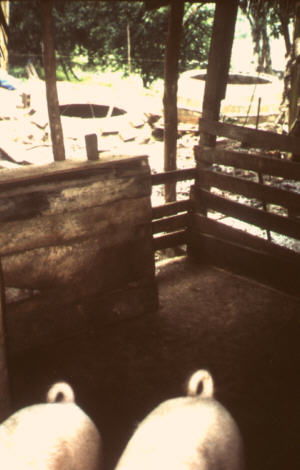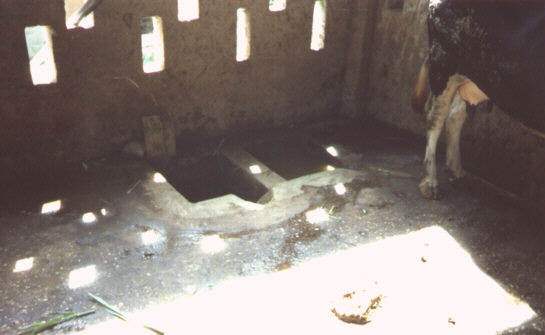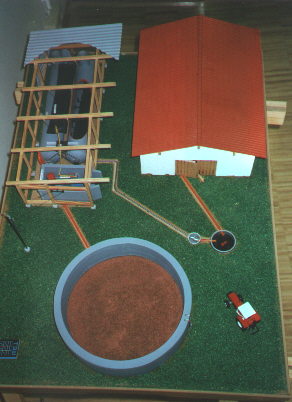Siting of the Biogas Unit
From energypedia
Stable
|
A digester should be as close as possible to the source of dung[1] |
- The stable should be built on an elevated position. This makes it possible to use gravity to collect urine and dung for feeding into the biogas plant. An elevated site on the farm also facilitates the distribution of slurry by gravity onto the farm land.
- For security reasons, the stable often is situated near the house.
- For easy access the feeding trough should be directed towards the area where fodder is grown.
- The milking place has to be at the higher end of the sloping stable floor. The milking should take place under clean conditions, away from the dung alley.
- At least half of the stable has to be roofed. If it is totally roofed, sun should still enter and ventilation should be assured.
- The position of the stable should allow for later extension.
- The animals need constant access to clean and fresh water and feeds.
- If the present position of the stable is unsuitable as a place for the biogas unit, it is usually better to shift the stable to the optimal position on the farm.
|
Cowshed, directly connected to the plant: A urine chamber to the right collects the liquid which can be used to wash the dung into the digester.[2] |
Characteristics of the Stable
- A golden rule is: the plant belongs to the stable rather than to the kitchen. Preferably, the mixing chamber and inlet are directly connected to a concrete stable floor. A few meters of piping are more economic than the daily transport of dung from the stable to the biogas plant.
- The roof of the stable should neither drain on the digester nor on the soil covering the plant. Large amounts of water entering the ground around the plant weaken the soil and cause static instability. Excess rain water may cool down the slurry in the plant and cause the gas production to drop.
- The overflow point should guide into farmland owned by the plant user. It has been observed that plants which overflow on public or foreign land can cause social problems. A promise of the owner to remove the slurry daily should not convince the planner.
- Water traps in the piping are a constant source of trouble. If the site allows, the plant and its piping should be laid out in a way that a water trap in the piping can be avoided. This is only possible if the pipes are sloping all the way back to the plant.
|
A model of an agricultural digester in Germany with two horizontal steel tanks, a gas storage bag and a co-generation unit in a container[1] |
- The piping is a major cost factor. It should not be unnecessarily long. This criterion, however, is given less priority than having the stable close to the inlet and the outlet directed towards the farm land.
- A fixed dome plant should not be located in an area required for tractor or heavy machinery movements.
- Trees should not be too close to the plant. The roots may destroy the digester or the expansion chamber. In addition older trees may fall and destroy parts of the plant. If the position of the biogas plant is too shady, the soil temperature around the plant will be low in general. This leads to a decrease in gas production.
- The area around a biogas plant should not be a playground for children. This is less important for underground fixed dome plants, more important for floating drum plants and essential for balloon plants.
References
-> back to "Biogas Portal"






















